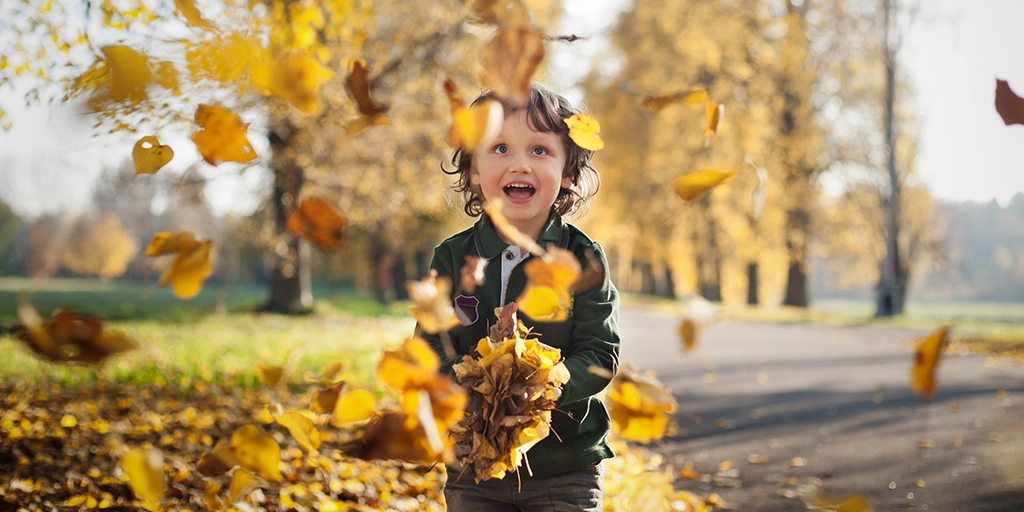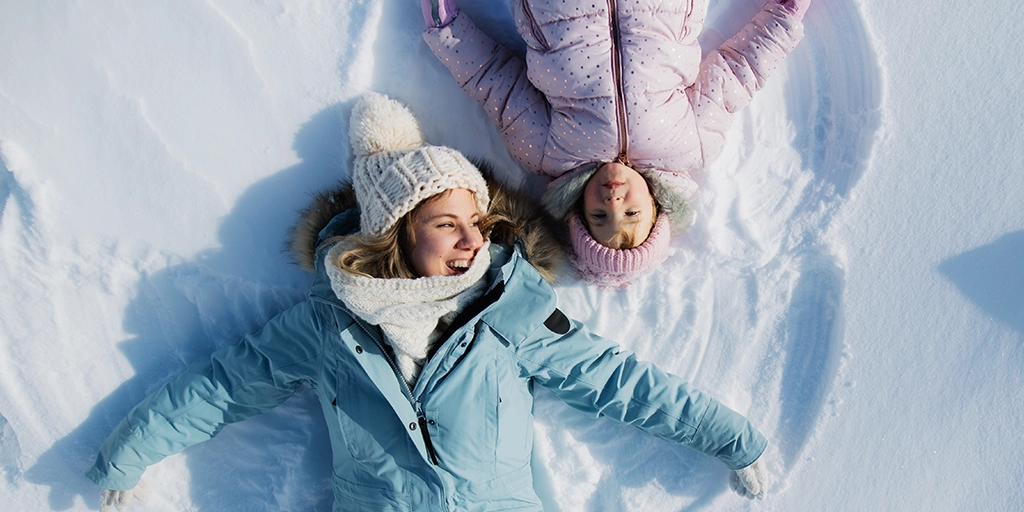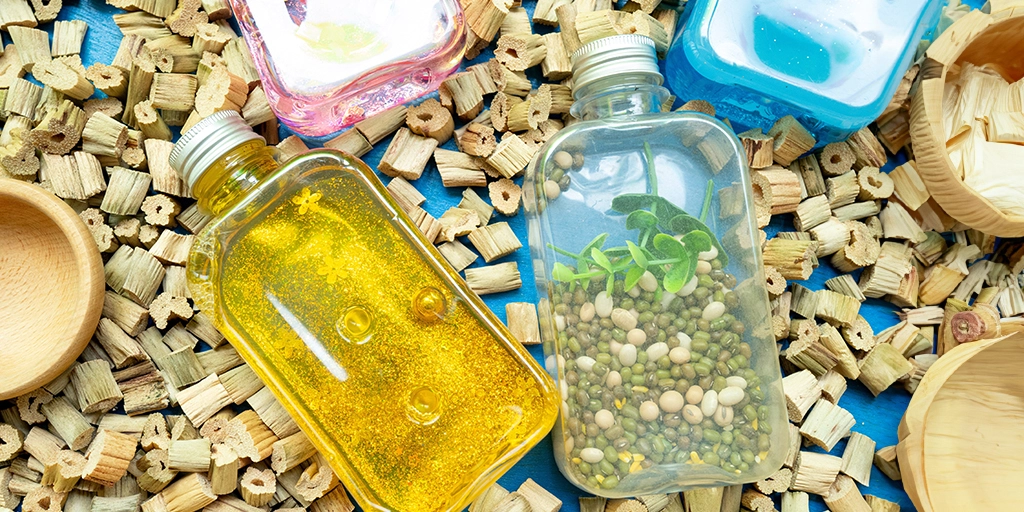Delightful Winter Sensory Activities for Autistic Kids
Updated on January 24, 2024With the cold temperatures, fewer daylight hours, and limited outdoor activities available, winter can make it harder for parents to find outlets for stimulation and engagement. Parents of autistic kids can especially relate. But while it may require a little more planning and preparation, winter provides a rich environment with a unique set of sensory experiences for children with autism to explore and understand their surroundings. Experiences that can help develop fine motor skills, sensory organs, concentration, and communication skills that last all year-round. This blog post provides ideas for both outdoor and indoor fun. From snow angels to snow dough, there are plenty of creative and exciting ways to make the most of the colder winter months.

Outdoor winter sensory activities for children with autism
Nothing makes the senses come alive like crisp, cold winter air, so put on those hats, mittens, and scarves and head outside to explore the sensory magic of the winter season. Here are some ideas for outdoor sensory activities that can be tailored to a child’s individual needs.
Nature Walk with Sensory Focus
Whether it’s playing with snow, feeling the wind, identifying smells from nearby trees, or listening intently for bird songs, taking a walk outside offers a unique opportunity for children with autism to observe their surroundings while engaging multiple senses at once. You can easily turn a nature walk into a nature scavenger hunt by challenging kids to explore their environment for different objects. It can be as simple as finding leaves of different colors and shapes or seeking out small animals like bugs or birds. This activity promotes focus on details in an environment and stimulates creativity.
Frozen Bubbles
Bubbles are universally fascinating, but frozen bubbles are on a whole different level. This activity introduces sensory elements associated with the winter environment and also makes the fun last longer since frozen bubbles don’t pop and disappear as quickly.
Start by mixing water and dish soap to make the bubble solution and add a sensory twist by incorporating food coloring for visually appealing frozen patterns. Gather a variety of bubble wands in different shapes and sizes. Choose a good outdoor location, such as a backyard or a local park, with enough space for kids to move around freely. Encourage kids to experiment with different blowing techniques. Watch as the bubbles freeze and form delicate ice crystals, then discuss the unique textures and shapes that emerge. Once the bubbles are frozen, encourage kids to gently touch the frozen bubbles, exploring the cold, smooth surfaces. This tactile experience adds an extra layer to sensory engagement and promotes the development of patience and anticipation as children wait for the bubbles to freeze.
Snow Angels
The humble act of making a snow angel in winter delivers a powerhouse of sensory stimulation that covers touch, sight, sound, and beyond. Contact with the cold snow provides a unique tactile sensation that can be invigorating and is often associated with a sense of freshness. The feeling of the soft, powdery snow can be soothing and calming. Creating a snow angel also leaves a beautiful imprint in the snow, forming a recognizable and symmetrical pattern that is aesthetically pleasing and may evoke a sense of accomplishment. And the sound of snow crunching under the movement of arms and legs adds an auditory dimension to the experience that is satisfying and enjoyable. Moreover, making a snow angel involves coordinated movements of enhancing proprioception and kinesthetic awareness that can contribute to a sense of spatial orientation and body control. And that’s before you consider the emotional and psychological benefits of simply playing outside and laughing together!

Indoor winter sensory activities for autistic children
Indoor sensory activities filled with cool winter-themed objects can provide a safe and controlled space for sensory exploration. It’s like bringing a piece of the snowy outdoors right into your living room.
Winter Wonderland Sensory Bottles
Sensory bottles provide a calming and engaging experience that enhances focus, promotes self-regulation, and offers a soothing outlet for sensory exploration. The visual stimuli of swirling glitter and slow movement within the bottle are especially appealing and therapeutic for those with autism. Making a customized winter-themed sensory bottle is easy using various objects such as food coloring, glitter, faux snowflakes, pipe cleaners, cotton balls, sequins, or even tiny holiday figures.
Fill a strong, clear plastic bottle with 1:1 parts water and corn syrup to create a thick mixture with a mesmerizing shimmering effect that you can’t get with water alone. Add your chosen items, then seal it tightly and shake it up! We suggest gluing the top lid to prevent unwanted sensory experiences (like having to clean up spilled sticky goop).

Icy Winter Treasure Hunt
This treasure hunt combines fun, anticipation, fine motor skills, sensory experiences, and even science experimentation into one! Start by gathering seasonal ‘treasures’ for your hunt. We recommend peppermint sticks, small pinecones, a sprig of pine needles, cranberries, and dried orange slices. Fill a freeze-friendly plastic container with water, add the items, and place it in your freezer for at least a few hours. The longer you let the mixture freeze, the longer and/or more challenging it will be for your child to dig out the items. When you’re ready to start, loosen the frozen block and transfer it to a larger container. Give kids excavation tools such as spoons and other non-sharp utensils to get started. You can also use a safe source of heat or salt to explain how ice melts and help them get to their treasures faster.
Snow Dough
Making snow dough is another great way for children with autism to explore their senses while having fun. The best part about this recipe is that the dough is cold, powdery, and moldable like real snow, and it’s super easy to make. Simply mix equal parts lotion and cornstarch in a bowl until it resembles dough-like consistency, then add some glitter or peppermint extract for sensational scent and sparkle. Knead the dough with clean, dry hands and form into snow balls (you can add more starch if it feels too sticky). Place in a sealable bag or container and pop it into the refrigerator for a few hours to make the dough extra cold. Your child can then use cookie cutters or other tools to shape the dough into whatever forms they like – this stimulates creativity while providing tactile sensations too!
Remember…
Don’t forget the power of cozy textures. Introduce soft blankets, plush pillows, and fuzzy socks to create a sensory haven. Winter-themed textures can be integrated into playtime, storytelling, or even during quiet moments of relaxation. The key is to observe and adapt based on your child’s unique preferences.
The AngelSense Team wishes you a warm and safe season, and hope the winter sensory activities in this post provide an opportunity for joyful exploration, helping your child build new connections and find comfort in their surroundings.

